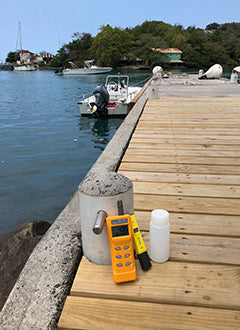
How do you measure the effects of fossil fuel CO2 emissions on pH levels in oceans?
That question was asked by Dr. Frank J. Elvin, Texas Specialty Catalysts, for a paper he presented at the American Institute of Chemical Engineers (AIChE) 2018 Spring Meeting and 14th Global Congress on Process Safety.
AIChE is the world's leading organization for chemical engineering professionals, with more than 60,000 members from more than 110 countries.
To answer the question, in 2017-18 Dr. Elvin took in-situ CO2 and pH measurements and collected seawater samples from the Pacific, Atlantic, Gulf of Mexico, North Sea, Baltic Sea, Black Sea and the St. Lawrence Seaway. The samples were then tested under laboratory conditions for pH, CO2 vapor pressure, and rates of CO2 absorption.
To collect atmospheric CO2 data in each location, Dr. Elvin used our pSense High-Accuracy Portable CO2 Meter.
The resulting data confirmed National Oceanic and Atmospheric Administration (NOAA) data showing that CO2 vapor pressure averaged 7% lower than the atmospheric CO2 partial pressure. This difference between CO2 in the air and CO2 in the water beneath it is the driving force for CO2 absorption by the oceans.
Historical data suggests that the average oceans’ pH decreased from 8.28 to 8.12 between 1750 and 2017. As CO2 is absorbed, carbonic acid is formed, pH decreases and seawater acidity rises. Increased acidification of the oceans has a direct impact on the marine food chain, coral reefs, and animals that form shells to survive.






